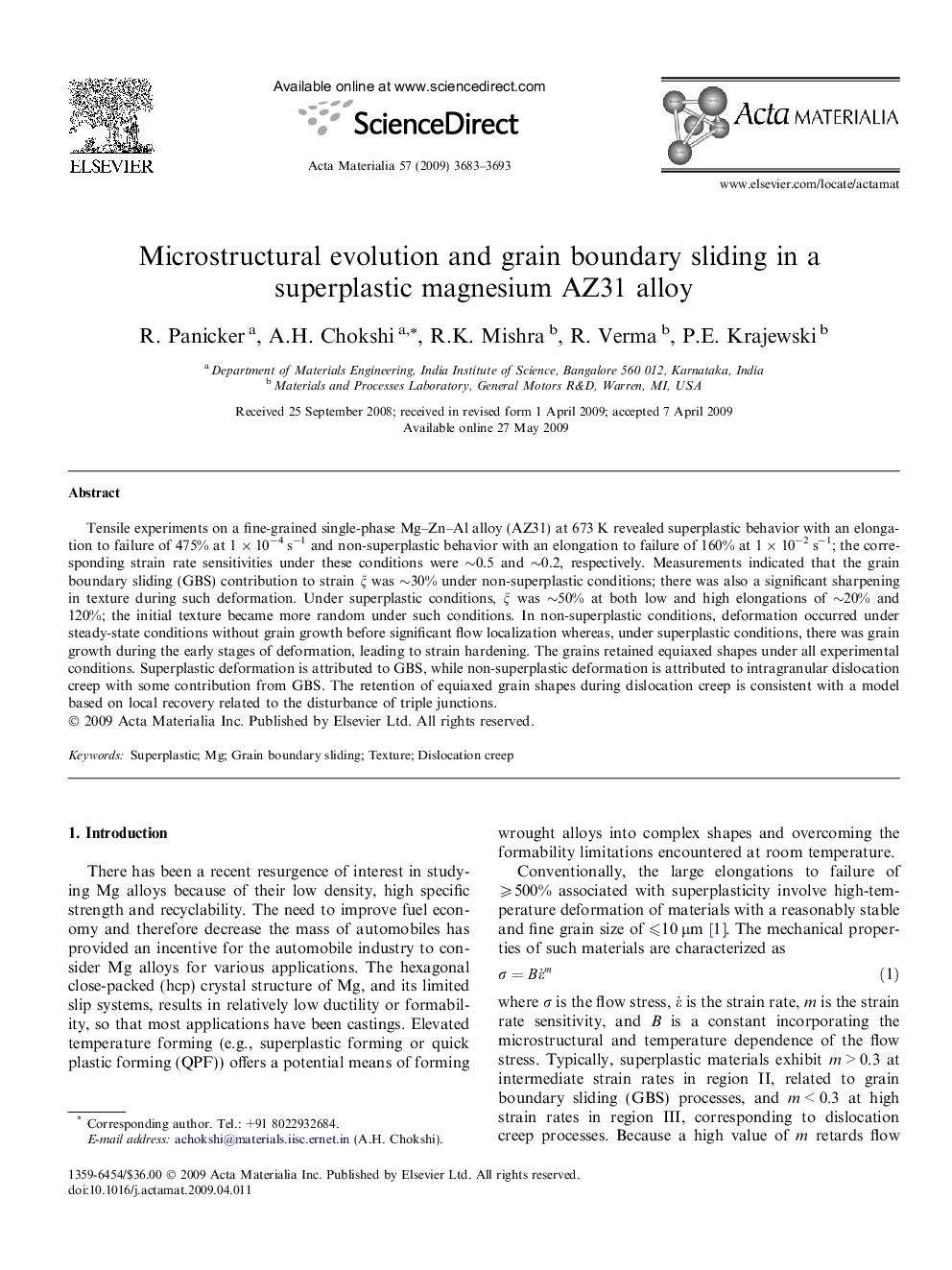| Article ID | Journal | Published Year | Pages | File Type |
|---|---|---|---|---|
| 1449131 | Acta Materialia | 2009 | 11 Pages |
Tensile experiments on a fine-grained single-phase Mg–Zn–Al alloy (AZ31) at 673 K revealed superplastic behavior with an elongation to failure of 475% at 1 × 10−4 s−1 and non-superplastic behavior with an elongation to failure of 160% at 1 × 10−2 s−1; the corresponding strain rate sensitivities under these conditions were ∼0.5 and ∼0.2, respectively. Measurements indicated that the grain boundary sliding (GBS) contribution to strain ξ was ∼30% under non-superplastic conditions; there was also a significant sharpening in texture during such deformation. Under superplastic conditions, ξ was ∼50% at both low and high elongations of ∼20% and 120%; the initial texture became more random under such conditions. In non-superplastic conditions, deformation occurred under steady-state conditions without grain growth before significant flow localization whereas, under superplastic conditions, there was grain growth during the early stages of deformation, leading to strain hardening. The grains retained equiaxed shapes under all experimental conditions. Superplastic deformation is attributed to GBS, while non-superplastic deformation is attributed to intragranular dislocation creep with some contribution from GBS. The retention of equiaxed grain shapes during dislocation creep is consistent with a model based on local recovery related to the disturbance of triple junctions.
